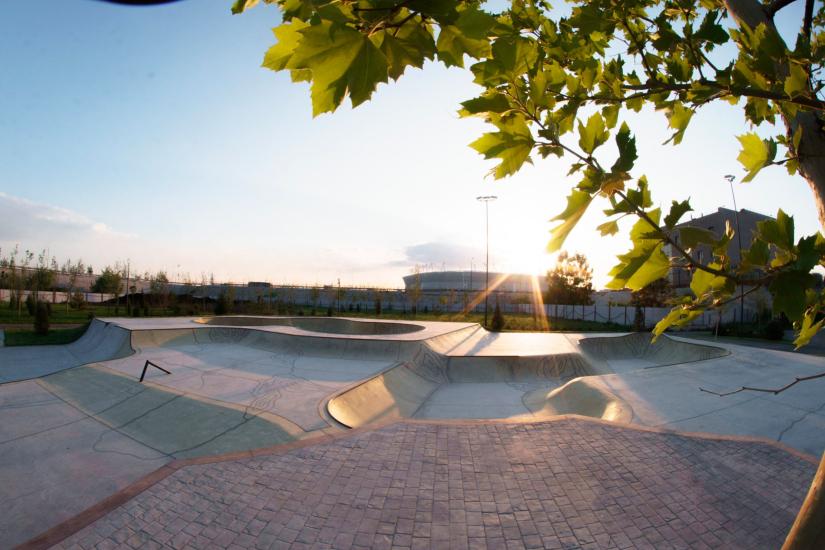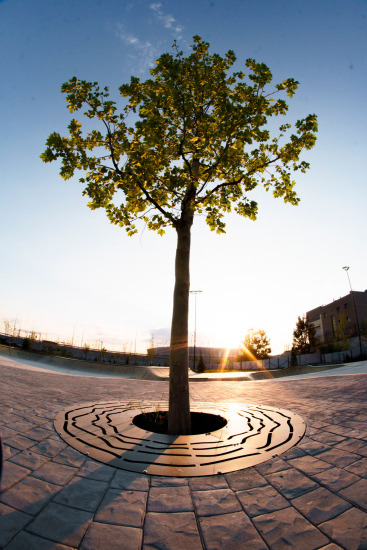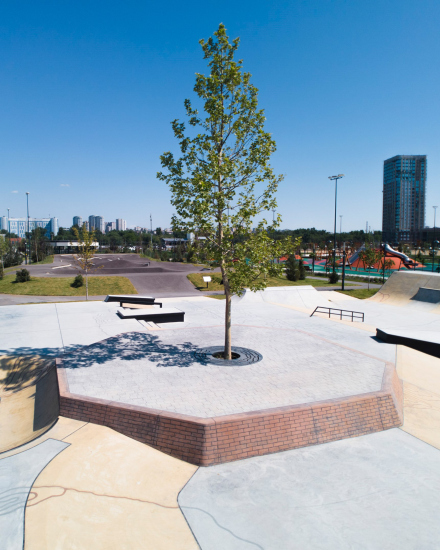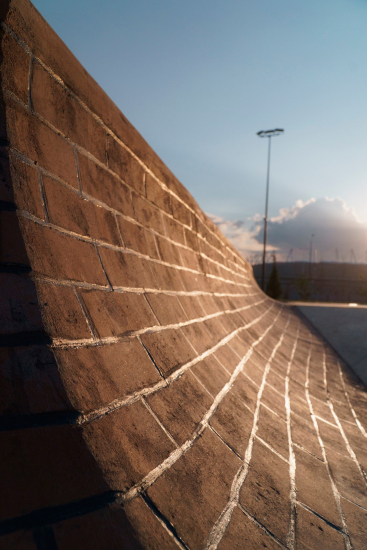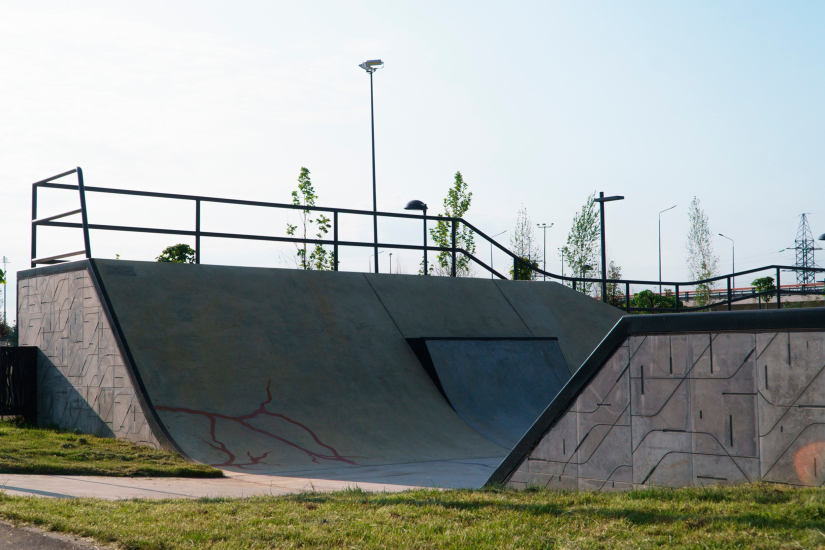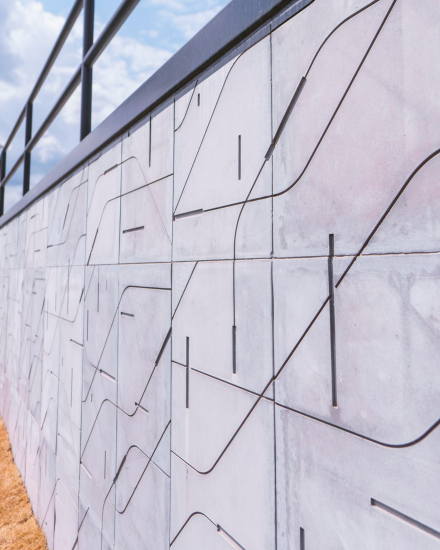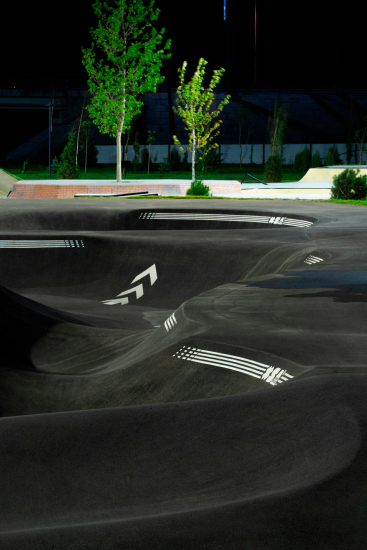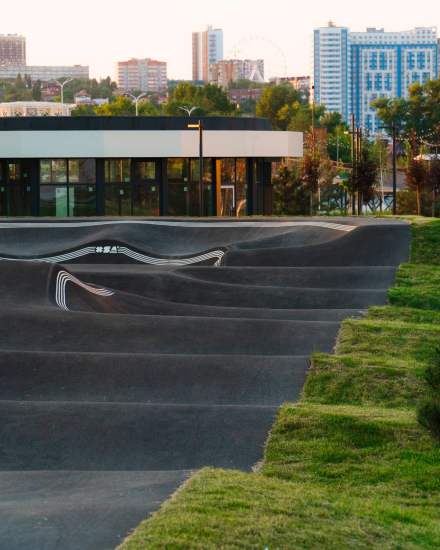The “Dunes” skate plaza aims to attract a young and active audience, adding visual appeal and, importantly, making efficient use of the space near the road and parking lot – areas that would be challenging to utilize for any other purpose. Given 1,850 square meters, the XSA team created a “park within a park”: a versatile three-part space that fits the formula “from 8 to 80” – anyone, regardless of age or physical condition, can come here and have a great time.
The team had plenty of ideas and visions of what this project should be. Initially, the plan was to utilize 1,200 square meters. But as ideas and creativity began to layer upon each other, new lines for skating emerged as the main zones were being formed. The creative process swept everyone away, and ultimately, the client approved an expansion of the hub to 1,500 square meters!
Now, the residents of the “Levoberezhye” neighborhood have what might be the best sports hub in Russia practically right outside their windows. It’s always nice to be able to say that you live near that very cool spot, rather than just a store or market–it changes your sense of identity. And not just for the young people alone.
Now, the residents of the “Levoberezhye” neighborhood have what might be the best sports hub in Russia practically right outside their windows. It’s always nice to be able to say that you live near that very cool spot, rather than just a store or market–it changes your sense of identity. And not just for the young people alone.
The aesthetic inspiration for the sports hub came from the memories of XSA founder and one of the project’s authors, Konstantin Taranov, who spent his childhood on the sandy shores of Levberdon, swimming across the river on a dare and absorbing the spirit of freedom and southern hospitality.
Skate Plaza with a Skate Bowl
The first part of the hub is the so-called plaza – a space filled with various structures that mimic urban obstacles like stairs and railings, allowing skaters to practice tricks of varying levels of complexity. Many skaters, especially beginners, can feel self-conscious when constantly in the public eye. Therefore, it’s essential to create spaces where people can skate both “on stage” and “behind the scenes”, allowing newcomers to decide when they are ready to take their skills to a more dynamic level. The plaza at “Levoberezhye” was designed by XSA with a combination of elements that help some riders build confidence while offering others ample creative opportunities. The designers call this approach inclusive and apply it across all their projects.
To safely get acquainted with the plaza, there’s a snake run – a beginner-friendly area where skaters can hone their skills before moving on to the bowl. Additionally, there is a “brick” octagon with a tree at its center – similar to a minor architectural form, a piece of urban furniture that has landed in the middle of the plaza. Riders can sit on it to take a break and observe others. Of course, it’s also perfect for pulling stunts – the steep ascent and rough surface present a challenge. The tree, integrated into the concrete plaza, not only provides shade but also alters the hub’s atmosphere with the changing seasons.
For more experienced riders, the bowl – a classic feature from the 1970s when American surfers, unable to catch waves due to drought, decided to skate in empty backyard pools – is the main attraction. Here, XSA has designed something like a “three-leaf clover”: the combination of hemispheres creates even more “waves”, and the pattern resembles sunlight reflecting on water. The bowl’s drainage system prevents rainwater from accumulating at the bottom, channeling it into the sewage system and away from the skate area.
The plaza is entirely constructed from concrete, with the XSA team using their own tried-and-tested mix recipe. Before each project, the factory produces a test batch. To achieve the perfect smoothness in transitions and radii, the concrete is hand-polished in several stages. The meditative nature of this process is captured in a short film.
Since the plaza has a “hilly” terrain with peak heights often located on the periphery, slopes emerge that need to be integrated into the surrounding environment. The architects partially conceal these slopes with geoplastic forms, while some walls are clad in concrete slabs featuring patterns that evoke the look of sand dunes.
Black Dunes
The plaza seamlessly connects to the asphalt pump track, a part of the hub designed for people of all skill levels. Here, anyone from a child on a scooter to an elderly “active retiree” on a bicycle can enjoy the space. XSA excels in crafting monolithic forms not only from concrete but also from asphalt. The black waves against the green grass resemble freshly tilled soil or solidified basalt.
The track is looped, and at the curve, it features two levels, allowing the riders to choose the radius that matches their skill level and gradually transition to more challenging trajectories. The double banking is marked with graphic white lines that aid in navigation and guide the rider’s movement. If desired, this part of the track even allows parallel riding on two different radii.
Musical Statues
The architects gave equal attention to the adjacent children’s playground. Here, essential skills for future riders are nurtured: balance, stability, speed, height awareness, and reasonable risk-taking, along with the ability to find like-minded peers and create their own play scenarios.
The space is safe and sufficiently abstract, yet richly stimulating. Children interact with various textures, colors, and volumes, subtly and imperceptibly training their bodies. The playground includes trampolines, slides, “humps”, various obstacles, and equipment for balance training. From a hill designed for older kids, one can easily observe what’s happening on the plaza and on the pump track. Parents haven’t been forgotten either – a long bench lines the perimeter of the playground for their comfort.
Contrary to the popular belief that extreme sports are a niche activity designed solely for those with exceptional physical fitness, “Dune” has become a universal space open to everyone. First and foremost, the place will attract riders – enthusiastic young men and women who will appreciate the “freedom of artistic expression” provided to them. Next, the most loyal audience will come: pre-teens and older children, who love scooters and bike tricks, and will be able to see an example for their own development. Younger children and their parents will be drawn to the bright and diverse playground. And for everyone else, the sports hub can serve as a sort of “sports theater” – virtually on any day of the week, one can come, find a seat in the “auditorium” and enjoy a spectacular show.







